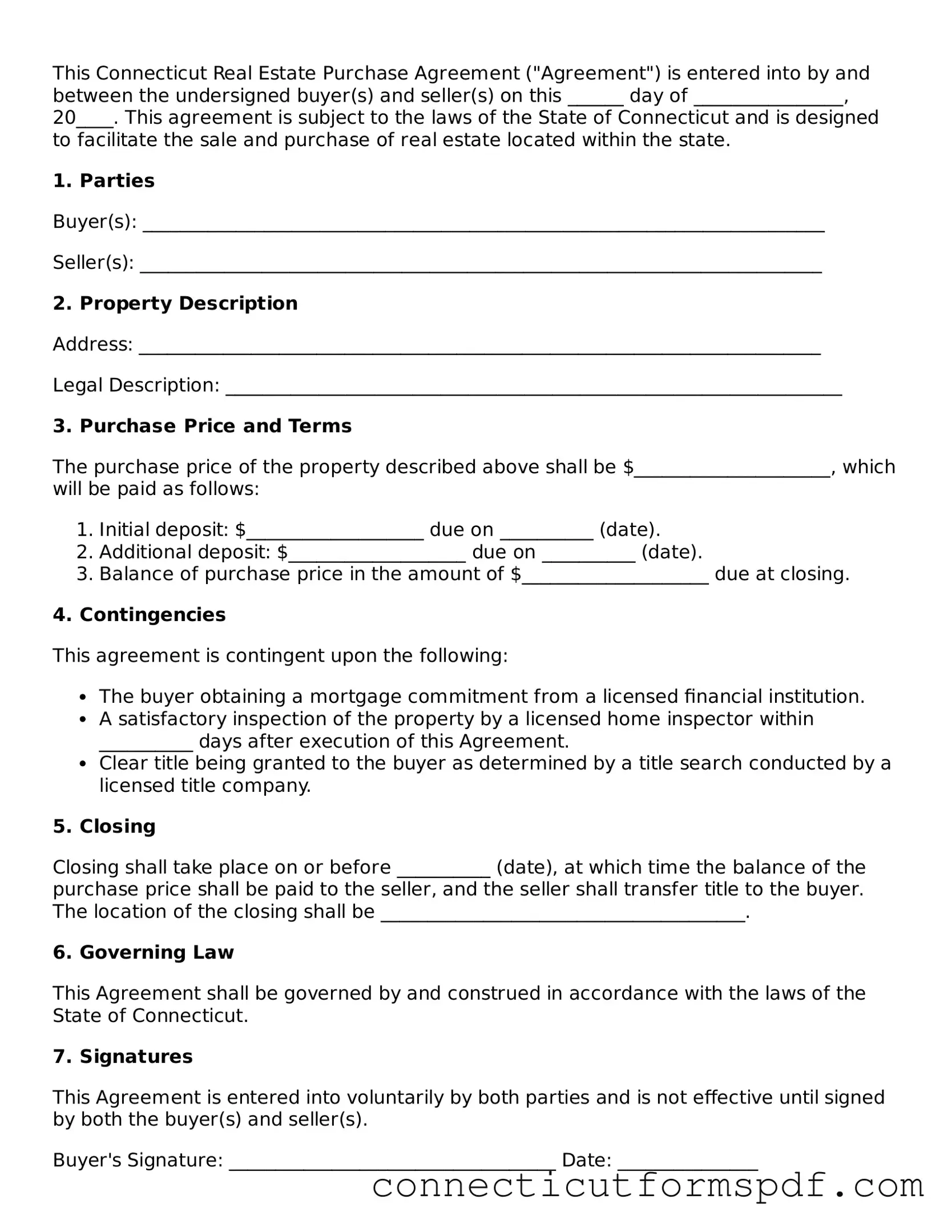This Connecticut Real Estate Purchase Agreement ("Agreement") is entered into by and between the undersigned buyer(s) and seller(s) on this ______ day of ________________, 20____. This agreement is subject to the laws of the State of Connecticut and is designed to facilitate the sale and purchase of real estate located within the state.
1. Parties
Buyer(s): _________________________________________________________________________
Seller(s): _________________________________________________________________________
2. Property Description
Address: _________________________________________________________________________
Legal Description: __________________________________________________________________
3. Purchase Price and Terms
The purchase price of the property described above shall be $_____________________, which will be paid as follows:
- Initial deposit: $___________________ due on __________ (date).
- Additional deposit: $___________________ due on __________ (date).
- Balance of purchase price in the amount of $____________________ due at closing.
4. Contingencies
This agreement is contingent upon the following:
- The buyer obtaining a mortgage commitment from a licensed financial institution.
- A satisfactory inspection of the property by a licensed home inspector within __________ days after execution of this Agreement.
- Clear title being granted to the buyer as determined by a title search conducted by a licensed title company.
5. Closing
Closing shall take place on or before __________ (date), at which time the balance of the purchase price shall be paid to the seller, and the seller shall transfer title to the buyer. The location of the closing shall be _______________________________________.
6. Governing Law
This Agreement shall be governed by and construed in accordance with the laws of the State of Connecticut.
7. Signatures
This Agreement is entered into voluntarily by both parties and is not effective until signed by both the buyer(s) and seller(s).
Buyer's Signature: ___________________________________ Date: _______________
Seller's Signature: ___________________________________ Date: _______________
